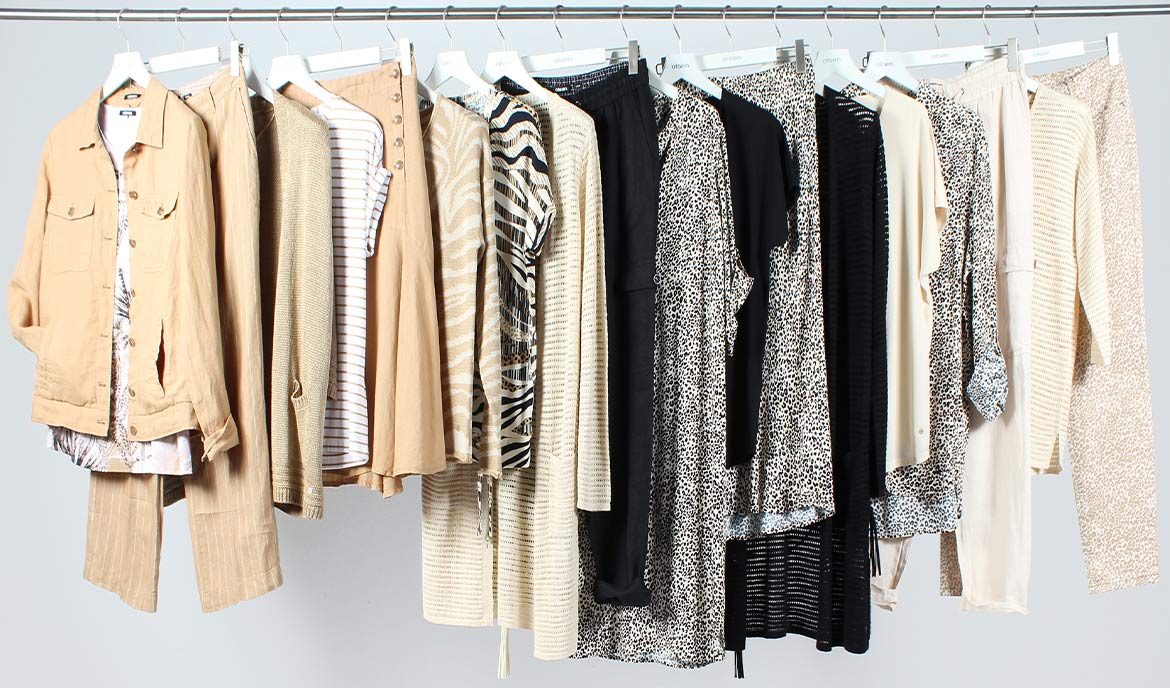Are you someone who simply can’t get enough of fashion? Always staying informed on the latest trends yet sometimes find yourself unsure of what to do with all these new terms in your vocabulary? Like what even is a culotte? And are houndstooth and herringbone really fashion terms or are they references to the animal kingdom?
Fashion terms made simple
Below we have compiled a list of relevant terms that every fashion-savvy woman should know. A mini encyclopedia, if you will. We hope it helps refresh and complete your knowledge!
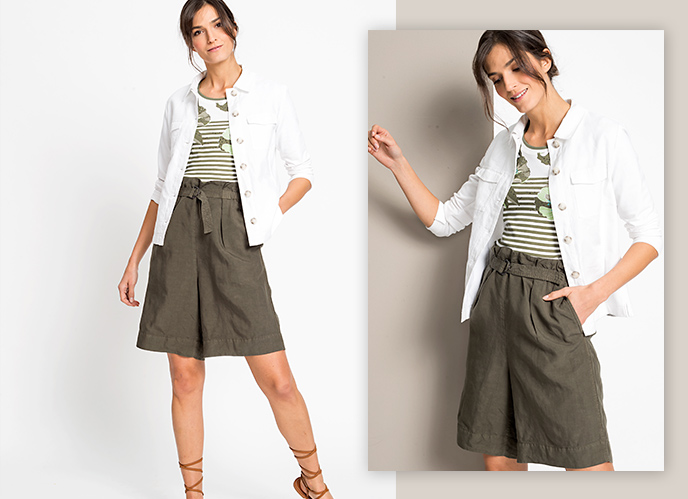
B like Bermuda
A for Allover
At Olsen, we love statement prints. In fact, we love them so much that we carry a wide variety of allover print pieces in our range. The term allover refers to a print that covers an entire garment.
B like Bermuda
Bermuda shorts are trousers cut just above the knee. A spring/summer wadrobe must-have, they add a laid-back touch to nearly any warm weather look.
C for Culotte
The trend of the moment: culotte trousers are cut with a flared hem, almost resembling the appearance of a skirt. Cutting off just below the knee or calf, they are perfect for adding a feminine, on-trend touch to seasonal outfits.
D for Double Face
Double face refers to a double fabric and consists of two knitted or woven layers that have been joined together. Double face coats are particularly popular because they offer versatility in styling.
E for Embroidery
Embroidery is an intricate technique that involves embellishing and applying decorative designs to a garment using stitches in silks, yarns and other materials. There’s a wide variety of stitching styles, some of which involve using sequins and beads!
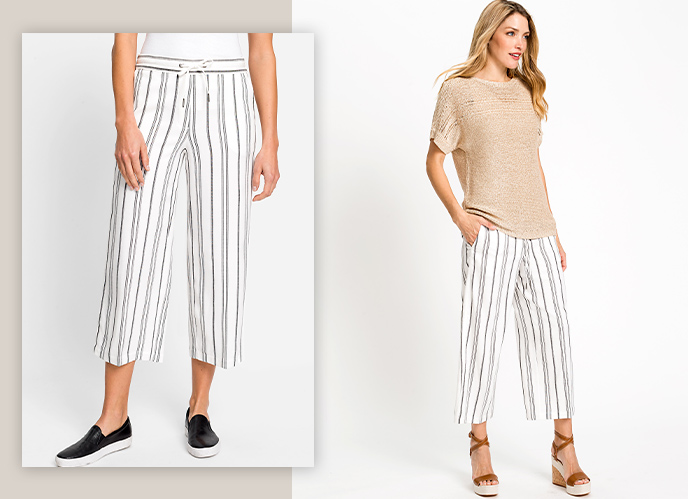
C like Culotte
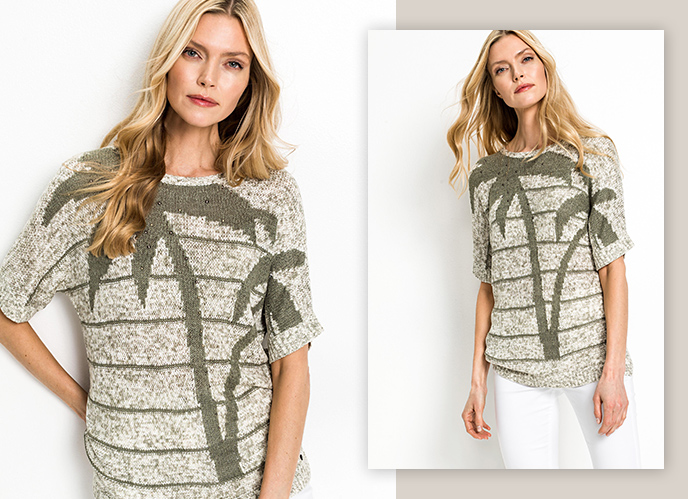
I like Intarsia
F for Flounce
A flounce is a wide strip of fabric gathered and sewn to a garment. Unlike ruffles, they are smooth at the seamline. Helping exaggerate the character and silhouette of a style, they most commonly appear at the hem of a skirt or dress, but can also adorn tops.
G for Glencheck
A forever classic, glencheck will likely never go out of style. The fine checkered pattern was originally created in Scotland and is most commonly seen in muted colours such as grey or beige. Colours like red or blue are often discreetly woven into the pattern to create contrast.
H for Houndstooth
The name houndstooth was inspired by the special shape of the check pattern, whose elongated corners are reminscent of a rooster’s footprint! The checks in the houndstooth pattern are arranged at right rangles and thus differ from Pepita or Vichy checks.
I for Intarsia
Intarsia is an intricate knitting technique where detailed, contrasting motifs are knitted into sweaters or cardigans. Unlike jacquard patterns, intarsia patterns do not cover the entire garment but instead decorate only one part. At Olsen, we love intarsia because of the special touch it adds to classic knitwear pieces.
J for Jersey
Jersey refers to soft, elastic fabrics that are either knitted or woven and can be made up of different material compositions. Clothing made of jersey is extremely popular in the fashion world because it’s super comfortable and easy to care for.
K for Keyhole Neckline
Perfect for adding a subtle touch of elegance and femininity to any top, the keyhole neckline features a centre cutaway just below the collarbone.
L for Linen
Linen is a material made of pure natural fibres that are obtained from the stems of a flax plant. It’s most popular in the summer because of its breathability and cooling effect. The linen fibre is relevatively inelastic, allowing it to crease easily. However this is not considered a default, but rather proof of the naturalness of the fibre.
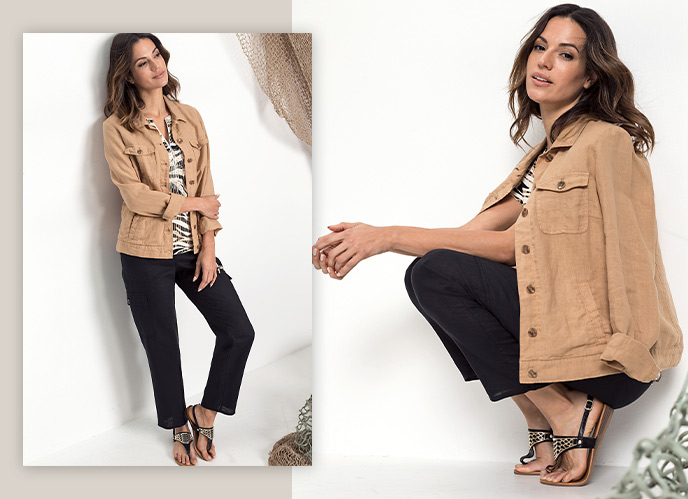
L like Linen
M for Monochrome
The term “”monochrome”” comes from the Ancient Greek and means “”having one colour.”” Today, head-to-toe monochromatic looks are a huge trend in fashion. Pieces of the same or similar colours pair perfectly to create chic looks that make a subtle statement.
N for Natural Fibre
Natural fibres are of natural origin and, unlike man-made fibres, can be processed directly without any synthetic processes. At Olsen, you can find several pieces made from natural, sustainable fibres such as organic cotton and linen.
O for Oversized
Oversized garments look like they may have been bought one or two sizes too big, but it’s not an oversight, it’s the intention of the style! They have a modern, laid-back feel and are super comfortable and airy.
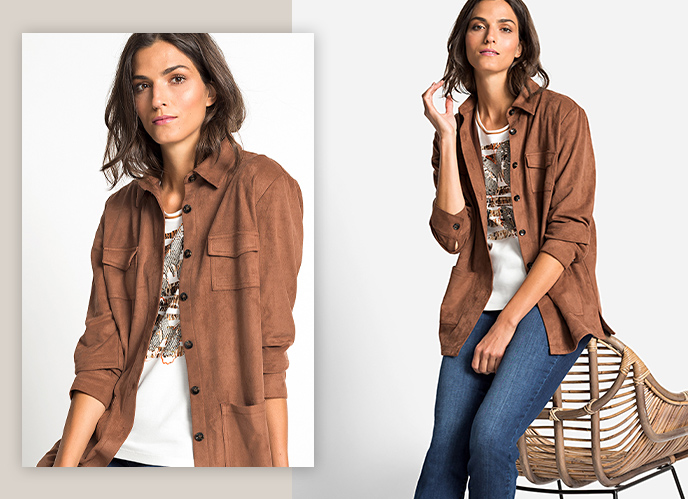
S like Suede
P for Pleated
Pleats are fan-shaped folds in dresses and skirts that provide extra volume and add a feminine touch. Ever since the legendary Marilyn Monroe wore a white pleated dress, it has been impossible to imagine fashion without these simple yet significant little details!
R for Retro
Retro looks are those inspired by the trends of past decades. Often times these key looks of the past make a comeback and get interpreted in new ways.
S like Suede
Suede is characterized by a soft, velvety surface that is slightly roughened. Reminiscent of cowboys and the wild west, it has a cool yet sophisticated feel that can elevate even the simplest of looks. At Olsen, we believe in using vegan suede as a cruelty-free alternative.
T for Tencel™
TENCEL™ is a brand that stands for the environmentally conscious production of lyocell and modal fibres. At Olsen, we are passionate about the soft and sustainable TENCEL™ materials and use them in many of our styles.
U for Utility
Patch pockets, shoulder straps, buckles and zips—all typical elements of the utility trend. The focus here is on fashion that is somewhat reminiscent of workwear and features correspondingly useful details and functional cuts.
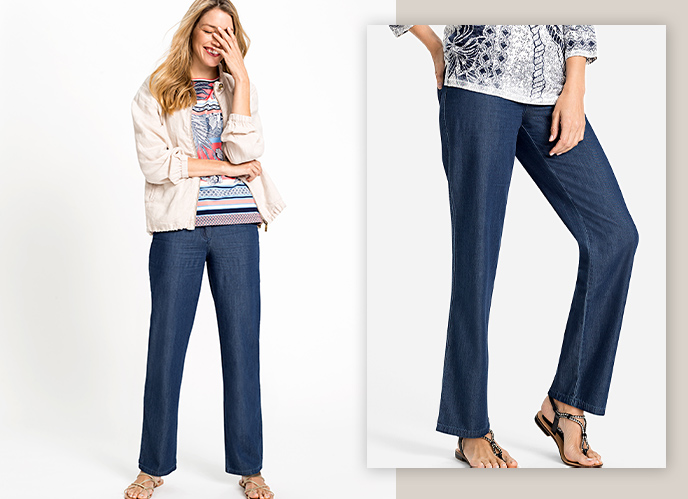
T like Tencel™
V for Viscose
Viscose is a material that is considered to be made with the most natural of man-made fibres. It’s made from cellulose which is obtained from wood and is typically referred to as “”artificial silk”” because it feels as soft and supple as silk. Viscose is also lightweight and airy, giving it a cool and breathable effect.
X as in X-type
The X-type, also referred to as the hourglass figure, is a term used to describe a figure charactized by a wider bust and hips and narrower waist. To find out which pieces best suit the X-type, check out our recent Style Guide blog post.
Z for Zipper
Though zippers have long been known for their practical use of opening and closing garments, they are now being used in fashion as a visual detail—adding a cool, sporty touch to many pieces.
